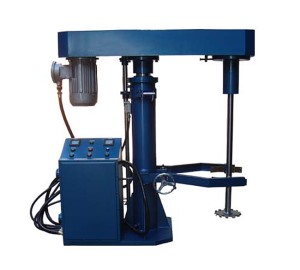
Disperser
Product Introduction
Dispersal machines are generally a type of mixer. Due to the use of high-speed mixers (such as disc serrated mixers), strong turbulence can be formed locally, typically resulting in strong dispersion and emulsification of the material. So this high-speed mixer is also called a disperser. Dispersers are mainly divided into lifting dispersers and kettle type dispersers. According to the lifting method, they can be divided into hydraulic lifting dispersers, pneumatic lifting dispersers, manual lifting blade type sand grinding dispersers, etc.
It adopts electromagnetic speed regulation, frequency conversion speed regulation, three speed and other specifications, and has stable and powerful operation, viscosity hydraulic and mechanical lifting forms. It is a common explosive configuration with free lifting and rotating. It has simple operation and maintenance, good production continuity, rapid dispersion and dissolution of materials, good dispersion, high production efficiency, stable operation, and simple installation. There are different types of electricity and models based on the viscosity and processing capacity of the material.
Job characteristics:
1. The strong centrifugal force throws the material from the radial direction into the narrow and precise gap between the fixed rotors, while being subjected to comprehensive forces such as centrifugal compression, liquid layer friction, and liquid force collision, the material is initially dispersed.
2. The high-speed rotating rotor of the disperser generates a linear velocity of at least 15m/s. The material is dispersed and broken under strong hydraulic shear, liquid layer friction, collision, and other effects, and is simultaneously ejected at high speed through the stator slot.
3. The material of the disperser continuously shoots out at high speed in the radial direction, changing its flow direction under the resistance of the material itself and the container wall. At the same time, under the action of the upper and lower axial suction generated in the rotor area, two strong overturned turbulent flows are formed. The material has been repeatedly used and the dispersion process has been completed.
